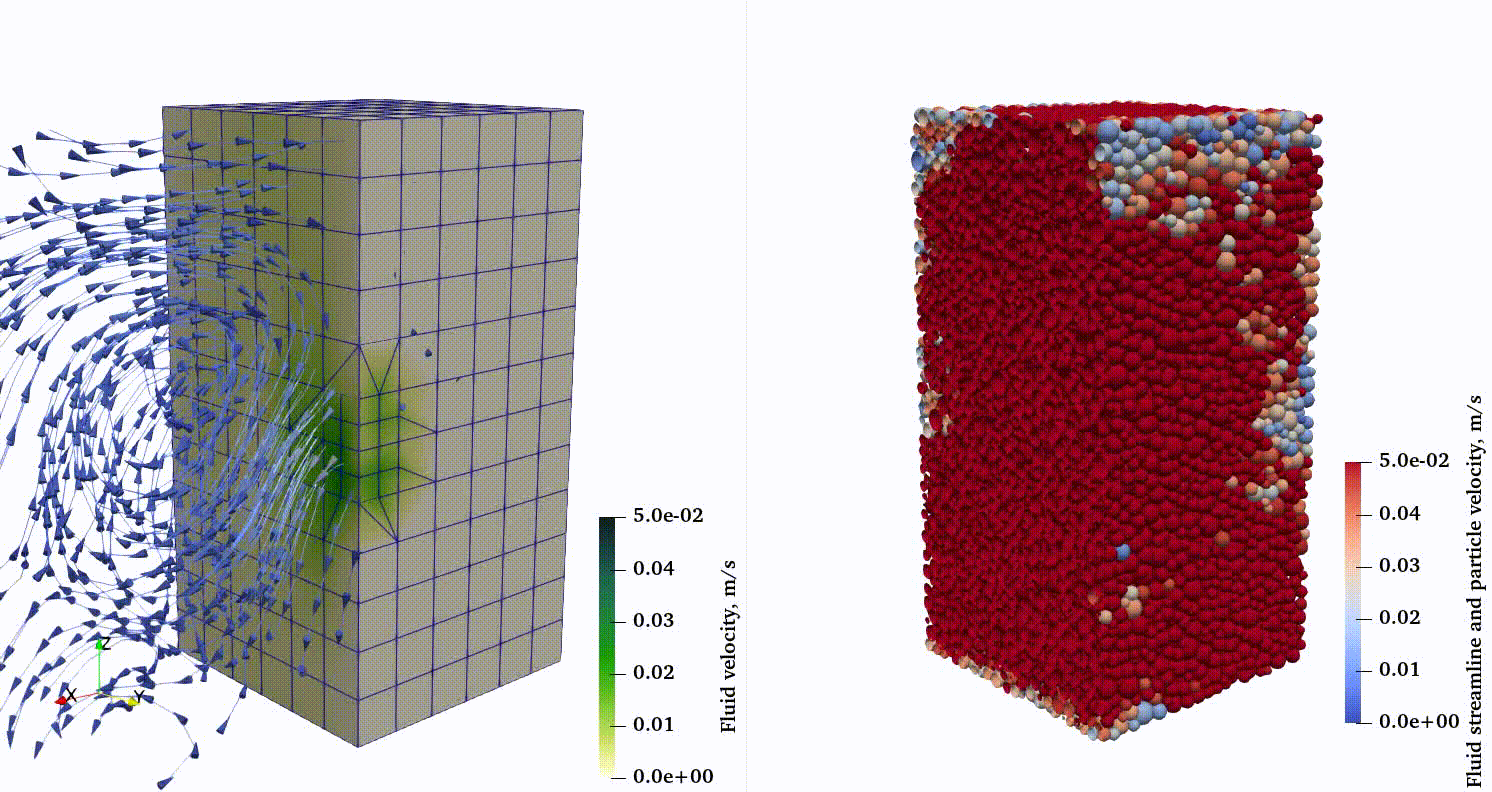Experimental and numerical study of the effect of polymer flooding on sand production in poorly consolidated porous media
Published in Geoenergy Science and Engineering, 2025
Recommended citation: Kazidenov, D., Omirbekov, S., Zhanabayeva, M., & Amanbek, Y. (2025). Experimental and numerical study of the effect of polymer flooding on sand production in poorly consolidated porous media. Geoenergy Science and Engineering, 213746. https://doi.org/10.1016/j.geoen.2025.213746
“Polymer flooding is crucial in hydrocarbon production, increasing oil recovery by improving the water–oil mobility ratio. However, the high viscosity of displacing fluid may cause problems with sand production on poorly consolidated reservoirs. This work investigates the effect of polymer injection on the sand production phenomenon using the experimental study and numerical model at a laboratory scale. The experiment uses an artificially made sandstone based on the characteristics of the oil field in Kazakhstan. Polymer solution based on Xanthan gum is injected into the core to study the impact of polymer flooding on sand production. The rheology of the polymer solution is also examined using a rotational rheometer, and the power-law model fits outcomes. The fitting parameters are used for the numerical model as an input. We observe no sand production during the brine injection at various flow rate ranges. However, the sanding is noticed when the polymer solution is injected. More than 50% of cumulatively produced sand is obtained after one pore volume of polymer sand is injected. In the numerical part of the study, we present a coupling model of the discrete element method (DEM) with computational fluid dynamics (CFD) to describe the polymer flow in a granular porous medium. The numerical model is performed considering the particle size distribution, porosity, and cementation behavior of the sample associated with the sandstone of the Kazakhstan reservoir. In the solid phase, the modified cohesive contact model characterizes the bonding mechanism between sand particles. The fluid phase is modeled as a non-Newtonian fluid using a power-law model. The drag force acting on a particle by the fluid is calculated considering the rheology of non-Newtonian fluid. We verify the numerical model with the laboratory experiment by comparing the dimensionless cumulative mass of produced particles. The numerical model observes non-uniform bond breakage when only a confining stress is applied. On the other hand, the injection of the polymer into the sample leads to a relatively gradual decrease in bonds. A greater fluid velocity enhances the influence of rheological parameters on the particle drag force, which causes intensive sand production at the onset of the injection. As fluid and particle velocities decrease, sand production enters a transient phase associated with a gradual decrease in the mass of sand produced over time. The polymer viscosity is lower at the region near the outlet hole, where the unbonded particles significantly predominate. In contrast, higher fluid viscosity is established in areas with tightly bonded particles, where the polymer flows at a lower velocity. Therefore, even at lower velocity values, the shear-thinning characteristics of polymer solution maintain the drag force at a higher and more constant level compared to water injection, in which the drag force decreases dramatically. The ratio of medium-sized produced particles is greater than the initial ratio of those before injection and makes the most significant contribution to the total mass of sand production.”

